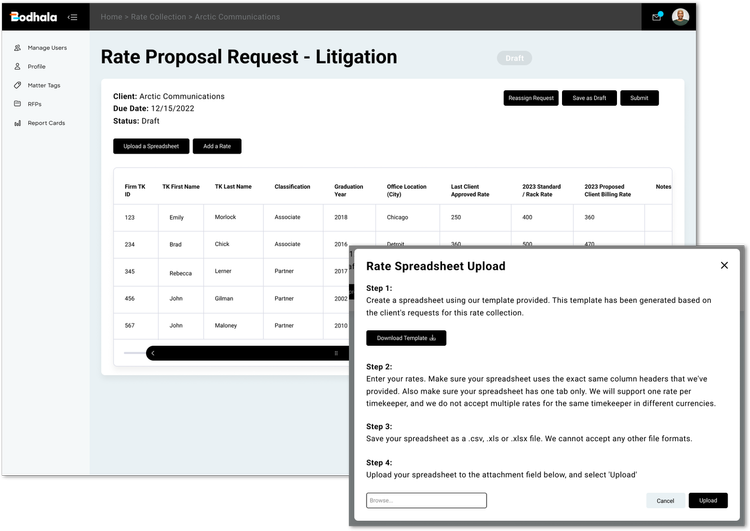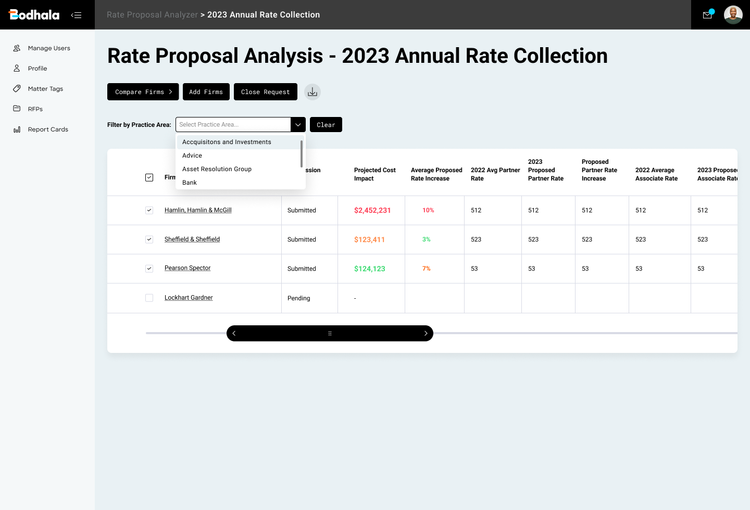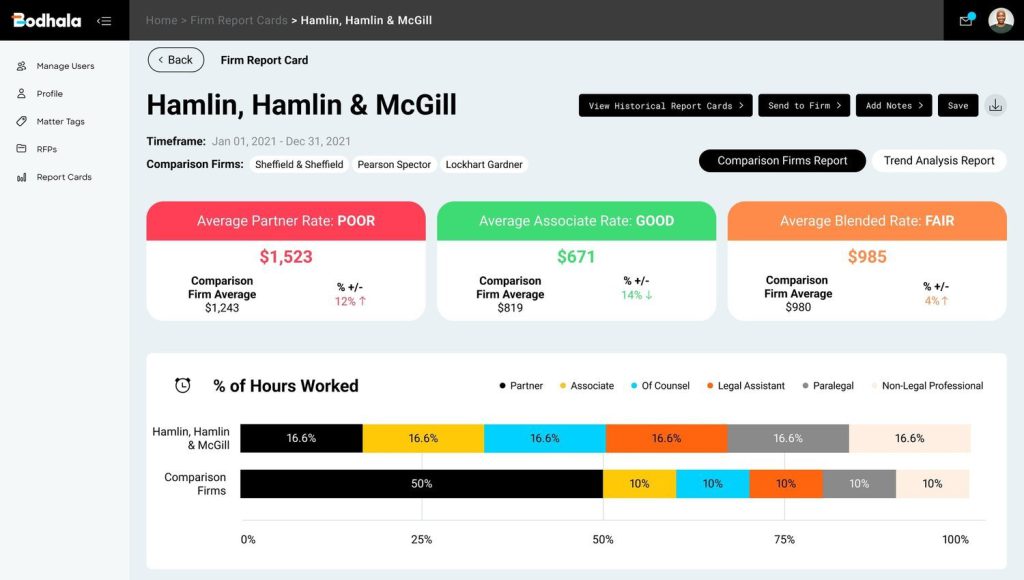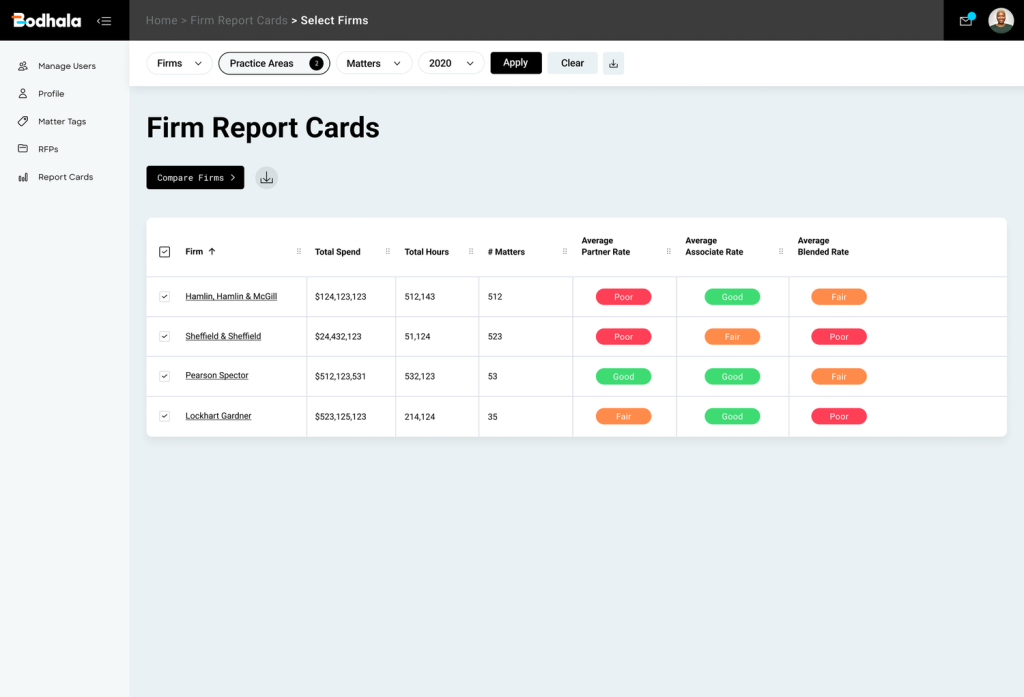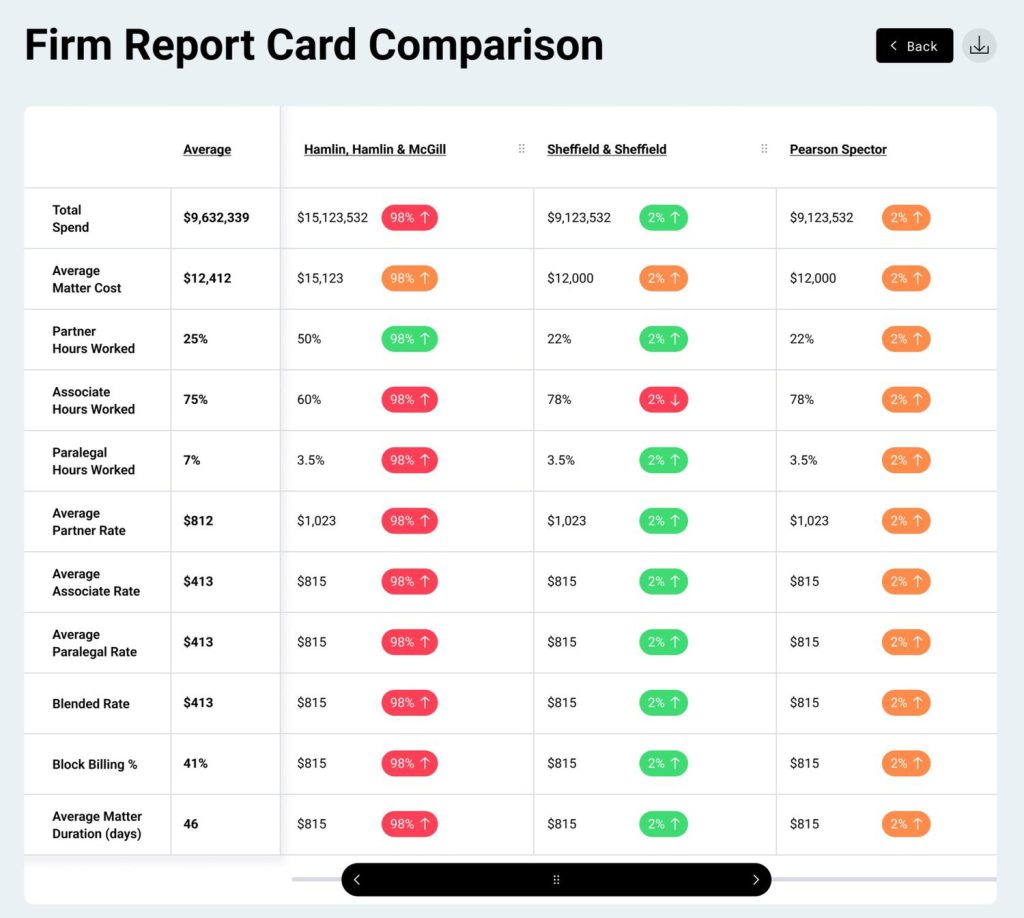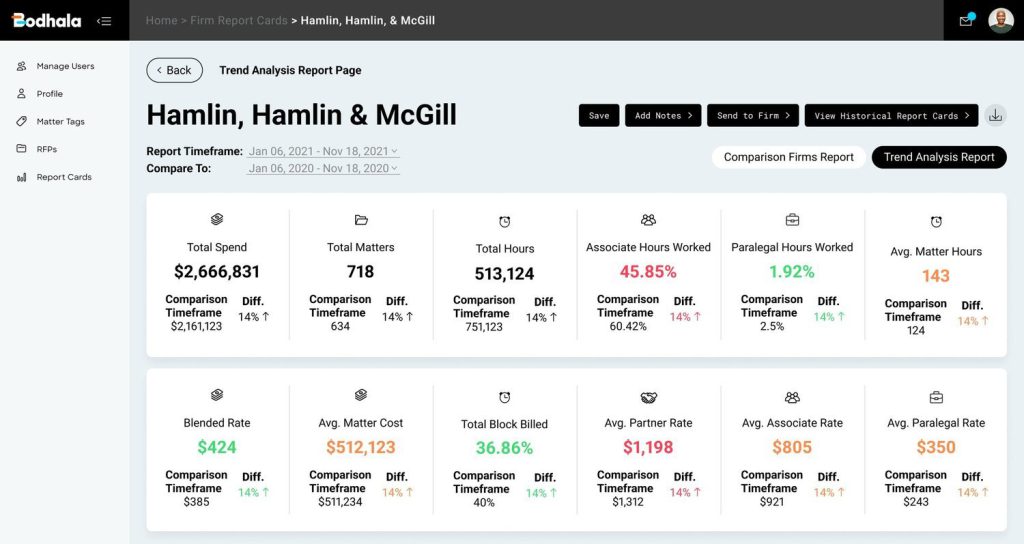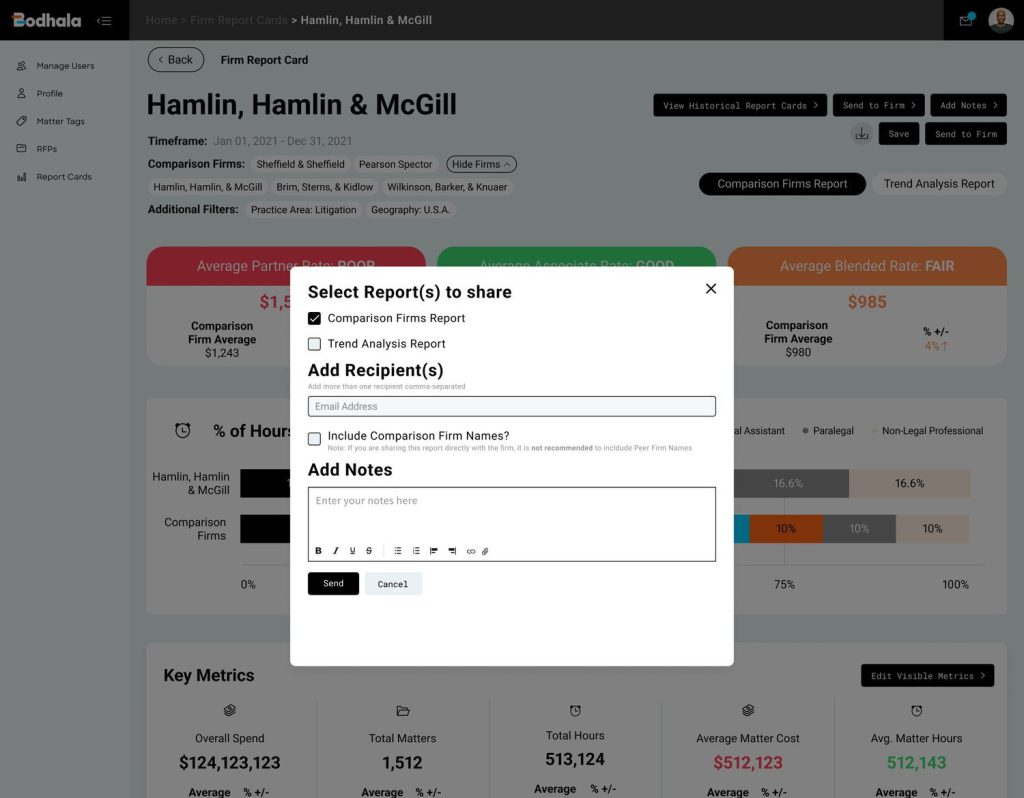
Rechtsabteilungen stehen zunehmend unter Druck, um effizienter und kostenbewusster zu arbeiten. Modernes Legal Spend Management unterstützt Sie dabei, kurzfristig Einsparungen zu erzielen, die die Anschaffungskosten übersteigen. Durch eBilling werden Prozesse automatisiert, die es Rechtsabteilungen ermöglichen, Einsparpotentiale zu realisieren und kennzahlengestützt Strategien für die Zukunft zu entwickeln.
Hier sind sechs Beispiele, wie Legal Spend Management zu Kosteneinsparungen führen kann.
1. DURCHSETZUNG VON RICHTLINIEN
Durch eBilling Software werden Rechnungen automatisch gegen Vergütungsregeln wie z.B. maximale Stundensätze, Gesamtbudget, Aufwendungen, Überstunden oder Teambesetzung abgeglichen. Die manuelle Rechnungsprüfung führt dagegen häufig zu versehentlichen Abweichungen und Fehlern. Dies gilt insbesondere für Rechtsabteilungen, die mit einer Vielzahl von verschiedenen Richtlinien und Kanzleien arbeiten. Die einschlägigen Richtlinien Ihres Unternehmens werden elektronisch in die eBilling Software eingegeben und während der Rechnungsprüfung automatisch ausgewertet. Nicht konforme Rechnungen, die vorher unbemerkt blieben, werden abgelehnt oder zur nochmaligen Prüfung angezeigt. Konforme Rechnungen werden automatisch zur Zahlung freigegeben.
Laden Sie unseren Leitfaden herunter, in dem Sie Beispiele für Billing Guidelines finden und erfahren, wie Sie diese erstellen und durchsetzen können.
2. KOSTEN TRANSPARENZ ZUR ECHTZEIT
eBilling zeigt kontinuierlich und transparent, wie Anwaltsrechnungen, Projektinformationen und Budgets eingegeben, verarbeitet und zentral gespeichert werden. eBilling ermöglicht so eine bessere und durchgängige Kontrolle als fehleranfällige Tabellenkalkulationen.
Moderne Legal Spend Management-Software bietet zusätzliche Tools, um den gesamten Lifecycle von Projekten einschließlich Kosten abzubilden. Mit Onit’s Legal Spend Management-Lösung BusyLamp können Kanzleien ihren Work in Progress (WIP) eingeben, bevor die entsprechenden Positionen in Rechnung gestellt werden. Dadurch erhalten Rechtsabteilungen bereits vorab einen Überblick über die laufenden Tätigkeiten. Sie können auch Kostenschätzungen eingeben und direkt über die eBilling Software mit den Kanzleien kommunizieren. Durch diese Transparenz wird die Budgetierung leichter, und Überraschungen über unerwartet hohe Kosten werden vermieden.
3. RECHNUNGSVERARBEITUNG UND ZEITEFFIZIENZ
Wie bei vielen Software-Tools führt Legal Spend Management zu wesentlich effizienteren und genaueren Daten. Mit eBilling werden Informationen digital verarbeitet, Rechnungen nach einem Abgleich mit den Vergütungsrichtlinien automatisch an die zuständige Abteilung zur weiteren Bearbeitung weitergeleitet. Dies spart enorm viel Zeit, weil Aufgaben wie z.B. die Eingabe von Daten, Scannen und Archivieren entfallen ebenso wie manuelle Tätigkeiten, die sehr fehleranfällig sind. Auch weitere Prozessverbesserungen führen dazu, dass Rechtsanwälte sich wieder mehr auf ihre juristischen Tätigkeiten und Expertise konzentrieren können, anstatt Zeit für einfache, administrative Aufgaben zu verwenden.
4. REPORTING
Sichere, genaue und zentralisierte Daten in Echtzeit machen es möglich, kurzfristig Berichte zu Verträgen und Dokumenten, Projekten und Kennzahlen zu erstellen. Viel Zeit geht dadurch verloren, dass Mitarbeiter in Rechtsabteilungen oft mühsam und trotzdem unvollständig Berichte aus verschiedenen On- und Offline-Quellen manuell zusammenstellen müssen. Mit Legal Spend Management-Software können Berichte automatisch und bedarfsgerecht erstellt und per E-Mail an die Stakeholder übermittelt werden. Auch wichtige, kurzfristige Ad-hoc-Berichte sind mit wenigen Klicks verfügbar.
5. RECHTLICHE ANALYSEN FÜR STRATEGISCHE ENTSCHEIDUNGEN
Durch Legal Spend Management wächst über Zeit eine Datenbank mit sämtlichen Projekten und Rechtsthemen sowie deren Kosten an, die in UTBMS- und LEDES-Codes abgelegt sind. Anhand strukturierter Analysen erhalten Sie einen Überblick über sämtliche Ausgaben und können auf dieser Grundlage gezieltere Entscheidungen treffen, indem z.B. Einsparpotentiale, Ausgabeverhalten und Budgetvergleiche zwischen Kanzleien, Projektarten, Rechtsbereichen, Rechtsordnungen, Seniorität der Rechtsanwälte etc. miteinander abgeglichen werden können. Dadurch lassen sich weitere Kosten reduzieren und Legal Operations verbessern.
eBilling gibt einen detaillierten und umfassenden Überblick über sämtliche Ausgaben. Ohne eBilling sind Auswertungen weitaus zeitraubender und personalintensiver. Systembasiert und über lange Zeiträume hinweg können Rechtsabteilungen ihr Ausgabeverhalten messen, anpassen und Einsparungen generieren. Durch eBilling können Rechtsabteilungen einen wertvollen Beitrag zu den Unternehmenszielen leisten, anstatt lediglich Cost Center zu bleiben.
6. ANBIETERQUELLEN
Moderne Software-Lösungen für Legal Spend Management wie BusyLamp enthalten Tools, um von den Kanzleien RFP’s und Kostenschätzungen für Projekte einzufordern. Durch die Verwendung eines einheitlichen Formats lassen sich die Angebote der Kanzleien schneller und leichter vergleichen, zudem wird im Wettbewerb um das Mandat zu attraktiveren Preisen angeboten. Auf dieser Grundlage kann eine Rechtsabteilung schneller und gezielter über eine Mandatsvergabe und dessen Budgetierung entscheiden.
Zur Ermittlung Ihres konkreten Einsparpotentials laden Sie sich den Leitfaden zum Erstellen eines Business Case für eBilling herunter, die verschiedenen Kalkulationen für etwaige Einsparpotentiale enthält.
Um präzise Erkenntnisse über die möglichen Einsparungen in diesen Bereichen zu gewinnen, empfehlen wir Ihnen den Leitfaden “Einen Business Case für Legal Spend Management” herunterzuladen. Dieser Leitfaden enthält Berechnungen für sämtliche Einsparungskategorien, die durch den Einsatz einer Legal Spend Management-Lösung erzielt werden können.





